The Casio CT-S1 from the Casiotone series might not seem like an obvious choice for piano-focused players at first glance. But how well does it actually perform as a piano?
Pros and Cons

The Casio CT-S1 from the Casiotone series might not seem like an obvious choice for piano-focused players at first glance. But how well does it actually perform as a piano?
Piano players often encounter moments when their familiar hammer-action instrument with a favorite grand piano sound isn’t available to capture a brilliant musical idea—like when traveling. For such situations, the Casio CT-S1 offers a lightweight, portable solution.
With 61 unweighted keys, the CT-S1 may not provide a full piano feel or range for every purpose, but it still offers plenty of opportunities for practice and exploration. The CT-S1 delivers a pleasing piano sound through a 2 x 2.5-watt internal amplifier with two speakers.
The keys have a balanced, piano-like design with a subtle texture for better grip, and the keyboard itself is compact and slim. Weighing in at 4.5 kilograms, it’s light but stable enough to stay in place while playing. The playing feel is more akin to a synthesizer keyboard but remains surprisingly comfortable. It feels solid—unlike many cheaper keyboards that can feel overly soft or spongy.
Priced at just above $300, the CT-S1 is available in black, white, or red. A thoughtful detail is the grip indentation below the keyboard, allowing you to easily carry it in one hand. And it has more to offer, too.
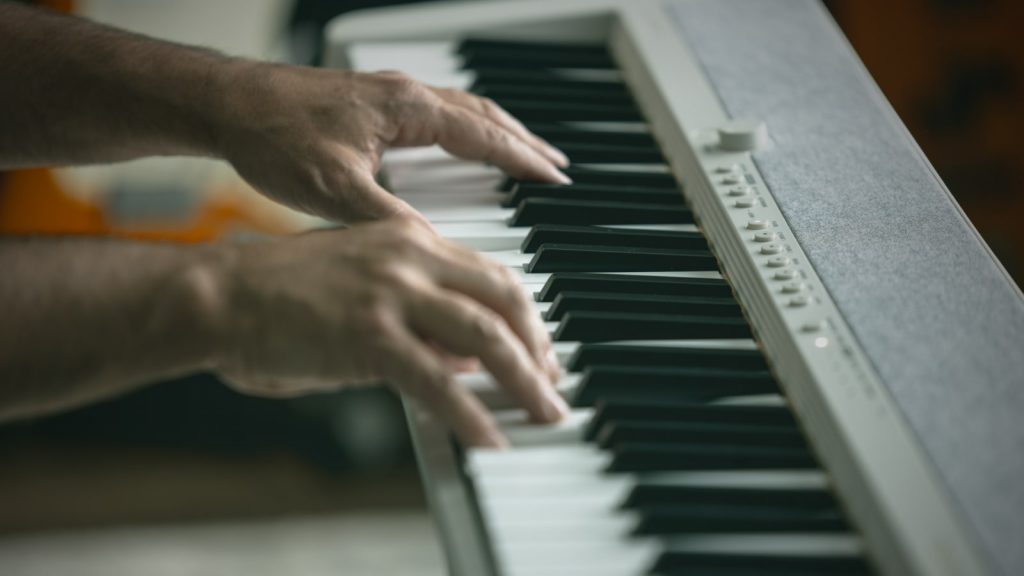
For its price, the CT-S1 puts a strong emphasis on impressively authentic acoustic and digital piano sounds. Alongside these, it offers organ, keyboard, synthesizer, and ambient sounds. With 64-note polyphony, you can use the sustain pedal to its full potential without fear of note drop.
The acoustic piano sound is similar to that of the CDP-S100—Casio’s smallest 88-key hammer-action portable piano. However, the CDP-S100 is 39 centimeters longer and weighs 10.5 kilograms more.
The grand piano sound on the CT-S1 is well-sampled, clear, and dynamic—and with three selectable touch curves, it also supports a nuanced playing style. Although the sound loops early during decay, and features such as string and damper resonance are less defined than on Casio’s larger models, the core tone is bright and pleasant. Subtle key and action noises add a natural touch.
The CT-S1’s built-in speaker system, with oval speakers subtly concealed under a contrasting fabric cover, delivers a strong, clean sound at moderate volumes.
As is typical in this price range, Casio has limited the connectivity options on the CT-S1. The headphone jack accommodates a standard stereo mini jack cable and serves as the only way to output the CT-S1’s audio through an external system, meaning there is no dedicated line output.
The CT-S1 has a micro-USB port for transferring MIDI data to a computer or mobile device. In addition, the USB-to-Device function allows you to connect a USB flash drive, making it easy to save song data or load MIDI tracks directly into the instrument.
The WU-BT10 Bluetooth adapter easily connects to the USB jack, enabling both MIDI and audio connections through wireless technology. This allows you to control the CT-S1 using Casio apps like Chordana Play or CASIO MUSIC SPACE on your tablet or smartphone.
However, when both Bluetooth audio and MIDI connections are active at the same time, you may experience playback issues while controlling MIDI songs. In such cases, temporarily disconnecting the Bluetooth audio connection can help restore stable MIDI signal flow.
The WU-BT10 adapter, which retails for around $70, adds significant value—especially considering the CT-S1’s low price. For those who prefer a wired connection, you can also connect the CT-S1 to other equipment via USB MIDI.
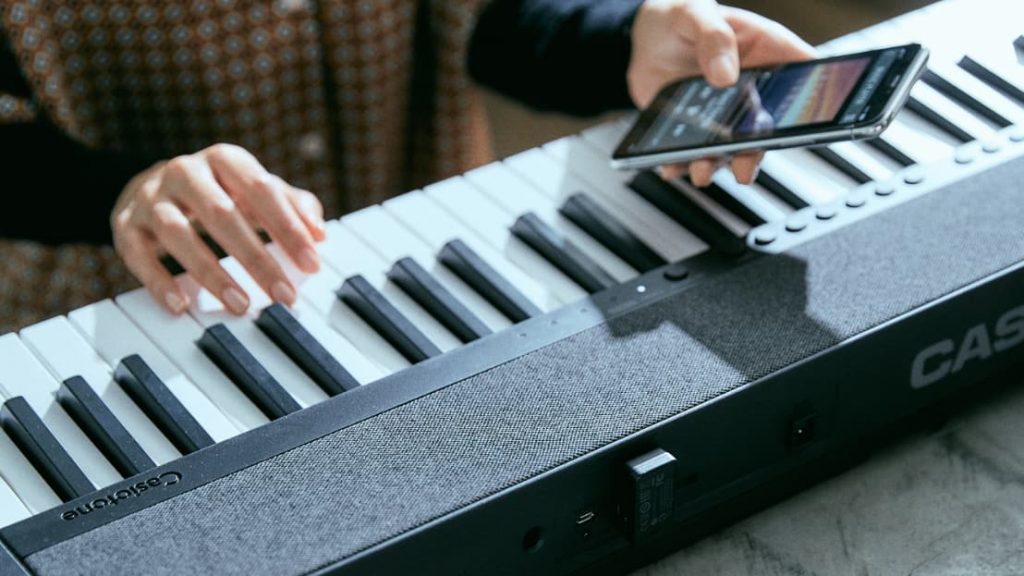
Great feature: The keyboard includes an audio input, allowing you to connect devices like an MP3 player to play audio through the keyboard’s speakers. It’s also a good idea to invest in a sustain pedal right away—Casio offers the SP-3 foot switch as well as the higher-quality SP-20 piano pedal.

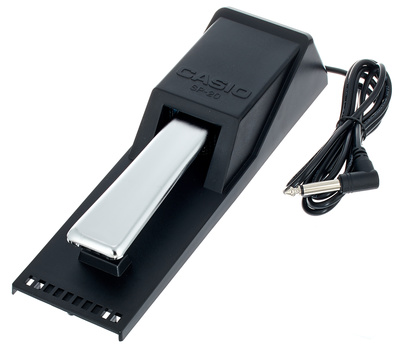
The keyboard features a compartment for six AA batteries located beneath a cover on the bottom. Casio recommends using Panasonic Eneloop batteries for optimal performance. There are also pins for attaching a guitar strap. The CT-S1 package includes two strap blocks, a music stand that can also accommodate a tablet, and an external power supply.
The Casio CT-S1 offers a total of 61 sounds, perfectly matching its 61 keys. Those familiar with instruments in this price range will recognize that the keyboard plays a key role in navigating through these sounds. By holding down the “Tone Variation” button, you can select from the 61 sounds using the keyboard keys.
The display-less control panel also provides an alternative for quick access, allowing you to access the 35 most important sounds through dedicated buttons. Seven of these are freely assignable, while the rest are preset options.
The acoustic piano selection includes ten variations. In addition to a more open main grand piano sound, there’s a subdued variant ideal for classical pieces, as well as sounds suitable for jazz, pop, and rock. Unfortunately, the CT-S1 lacks a dedicated split function, so the only preset available is a double bass piano split.
Layering sounds is straightforward, with several presets available that combine piano and pad sounds alongside excellent strings and various synthetic pads and atmospheric sounds—features you might not expect from a keyboard at this price point. A few modulation effects are also included, each as a fixed preset, adding depth to the experience.
Well-crafted electric pianos, including Fender Rhodes, Wurlitzer, and FM sounds, come to life with DSP effects like chorus and phaser. Clavinet and harpsichord sounds are of good quality, while the organs, reminiscent of Hammond models, benefit from both rotary and distortion effects. The beautiful church organ is enhanced with a powerful cathedral reverb. Additionally, you’ll find usable brass sounds, an accordion, and even a monophonic lead sound with portamento on the CT-S1.
One standout feature of the Casiotone CT-S1 is the twelve sounds accessible via the keys of the top octave. These sounds hail from the now-legendary Casio keyboards of the late ’70s and early ’80s, a period during which “CT” became synonymous with the Casiotone product line. The original concept was to provide affordable keyboards, often equipped with mini-keys, so that anyone could play.
Fast forward 40 years, and the Casiotone CT-S1 essentially continues this legacy. Model series names like CT, CZ, and VZ refer to vintage keyboards and synthesizers, with selected sounds such as “Trumpet,” “Violin,” “Guitar,” and “Bass” making their way into the CT-S1.
It’s important to note that these sounds may not align with contemporary expectations. Instead, they serve as playful nods to synthesizer history, especially when paired with sounds from the Casiotone predecessor, the VL-1 (1981). When you select this sound, you can play various drum beats on the lower keys of the keyboard alongside a synthetic violin sound in the right hand. These beats, however, do not resemble modern drum rhythms; rather, they evoke a nostalgic charm. In fact, the North German band Trio made them famous in Germany with their 1982 hit “Da Da Da”.
The Casio CT-S1 features a built-in metronome to enhance your practice sessions, as well as a simple MIDI recorder that can record one song at a time. Once saved to a USB stick, you’re ready to record a new song.
For added enjoyment, you can use the “Chordana Play for Keyboards” app (available for both iOS and Android). This app includes both a MIDI and an audio player. In the MIDI section, you can practice Casio pieces with your left and right hands separately, while the software provides a synchronized note display. The audio player allows you to adjust the tempo or pitch independently for practice purposes. Additionally, the app features a “Melody Cancel” function, although the results may not always be perfect.
You can also use the CT-S1 as a MIDI keyboard with your computer, as it supports both sending and receiving on 16 MIDI channels. However, it lacks a dedicated song set for general MIDI playback and does not offer drum and bass sounds for comprehensive MIDI recording. Consequently, it doesn’t really work as a controller keyboard for a DAW—however, this is not the primary purpose of the CT-S1 anyway.
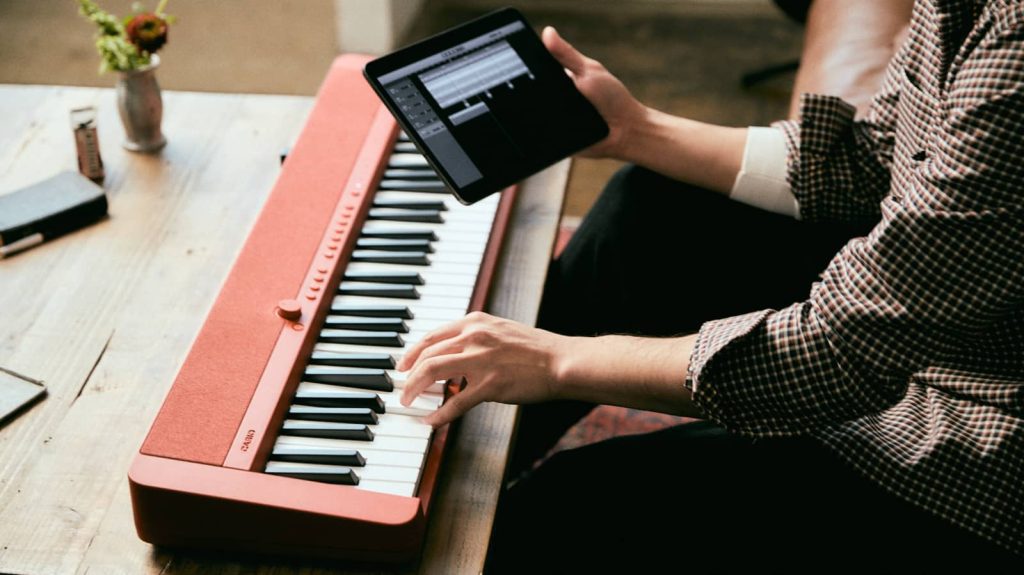
The Casiotone CT-S1 delivers the sound of a portable piano with a convenient 61-key keyboard and built-in playback. Designed for live performance, this model is both convincing and impressive, especially given its low purchase price. Its tonal range clearly surpasses that of many entry-level pianos, making the absence of a split function a missed opportunity.
Overall, this compact and lightweight instrument serves as an ideal second piano that you can take anywhere. It’s also a great option for beginners: if you’re looking to gain keyboard experience without committing to a weighted 88-key piano right away, the CT-S1 is an excellent choice. Additionally, it remains a valuable portable piano even after you’ve upgraded to a full-size model.
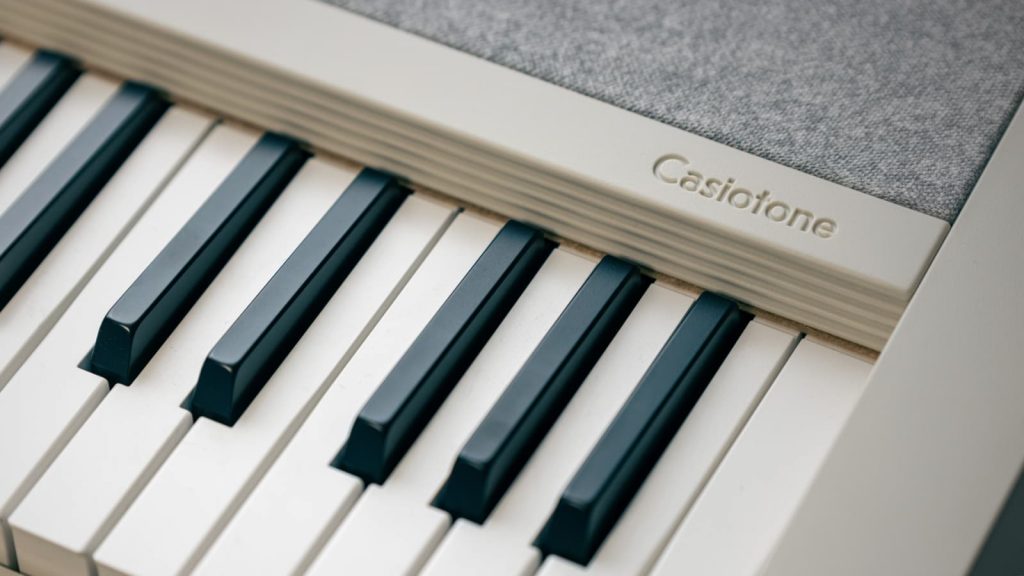
Release date: 06.2021
Keyboard: 61 piano-style keys
Polyphony: 64 voices
Piano app: Chordana Play for Keyboards, free of charge (iOS & Android)
Included accessories: Power supply, music stand
Manufacturer/Distributor: Casio
*Affiliate link. These “advertising links” help us finance our website. If you buy a product through such a link, we receive a small commission – at no extra cost for you. The PIANOO.com team says thank you for your support!
Pros and Cons
It's also a great option for beginners: if you're looking to gain keyboard experience without committing to a weighted 88-key piano right away, the CT-S1 is an excellent choice. Additionally, it remains a valuable portable piano even after you've upgraded to a full-size model.
You are currently viewing a placeholder content from Facebook. To access the actual content, click the button below. Please note that doing so will share data with third-party providers.
More InformationYou are currently viewing a placeholder content from Instagram. To access the actual content, click the button below. Please note that doing so will share data with third-party providers.
More InformationYou are currently viewing a placeholder content from X. To access the actual content, click the button below. Please note that doing so will share data with third-party providers.
More Information